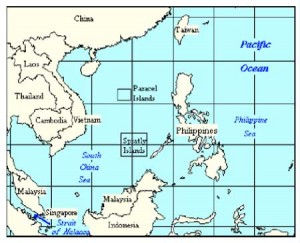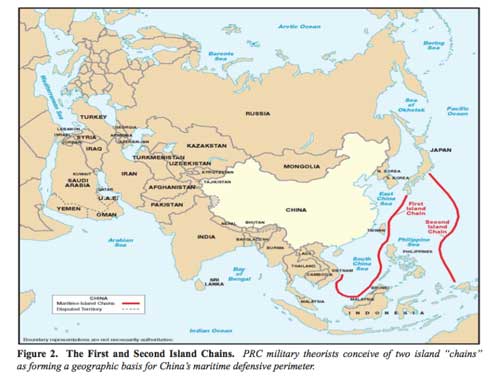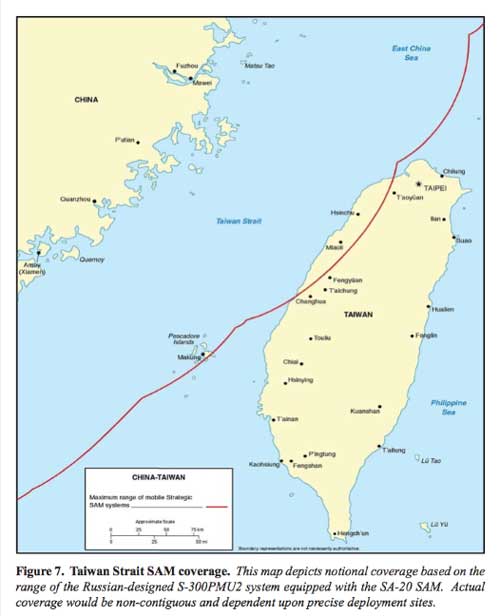Can Hope Triumph Over Experience?

09/30/2010 – Another theme in this year’s DoD report on the Chinese military is its appeal to China to make its military programs and objectives considerably more transparent by disclosing more data and engaging in more comprehensive military exchanges with the U.S. armed forces. Although acknowledging “modest improvements” in this area in recent year, the authors caution that, “The limited transparency in China’s military and security affairs enhances uncertainty and increases the potential for misunderstanding and miscalculation.”
Conversely, they argue that, “Sustained and reliable U.S.-China military-to-military relations support this goal [of avoiding an adversarial relationship”] by reducing mistrust, enhancing mutual understanding and broadening cooperation.” Unfortunately, the report confirms that, “China’s recurring decision to suspend military exchanges has impeded this effort.”
Despite the vigorous efforts of several different U.S. administrations since 1990, little progress has been achieved in the military dialogue between the United States and the PRC during the past two decades. Since the early 1990s, the two defense communities have negotiated a series of bilateral security and confidence-building measures seeking to reduce mutual tensions and advance common interests. These agreements have promoted a better understanding of the other side’s security concerns, but they remain highly constrained and vulnerable to disruption from external shocks.
The two governments still fundamentally disagree regarding how to manage military relations in ways that eschew these acute confrontations. Incidents between PRC and U.S. military units operating in the international waters and airspace near China have repeatedly disrupted their bilateral relations. In addition, the PRC frequently suspends Sino-American defense ties due to disputes over Taiwan and other issues, making clear how little Beijing values the relationship between the People’s Liberation Army (PLA) and the Pentagon.
 South China Sea as Area of Competition
South China Sea as Area of Competition
Credit map: http://www.abanet.org
Several factors have impeded the development of Sino-American defense ties:
- The contentious territorial and sovereignty issues have led to recurring PRC-U.S. military confrontations.
- Although Chinese and American leaders have long differed over the legitimate extent of Beijing’s control over its EEZ and the South China Sea, the main dispute centers on Taiwan, where the DoD and U.S. arms sales to the Taiwanese government have become the main obstacles to any PLA military occupation of the island. (See sinodefence.com’s coverage of the East China Sea)
- These specific territorial-cum-sovereignty disputes have reinforced the often contentious nature of PRC-U.S. political relations, which reflects deep differences between Chinese and American leaders over values as well as their competition for influence in East Asia. The resulting conflicts and mutual suspicions have provided an unfavorable environment for flourishing defense relations.
- China’s inferior military capabilities with respect to the United States lead PRC policy makers to conceal information that could provide the DoD with insights into the PLA’s vulnerabilities.
- As a rising military power, the Chinese government does not want to codify existing disparities in force capacities or military operating patterns that currently favor the United States.
- Influenced by a strategic tradition that emphasizes deception, many PLA strategists believe that opaqueness assists in deterring potential adversaries by complicating their defense planning.
- PRC policymakers want to obscure the full extent of their military buildup.
The absence of a robust relationship between the Chinese and American militaries is indeed disturbing since the PLA has expanded its level of external engagement considerably in recent years. The December 2008 decision to send a naval task force to assist with the multinational counter-piracy mission off Somalia’s coast has established a precedent for further Chinese military operations at great distances from the PRC.
More occasions are likely to arise when Chinese and American ships and other military units operate in close proximity. The PLA’s growing global presence increases the risks of further Chinese-American military incidents, whether due to accidents, miscalculation, or other causes.
 Credit map: 2010 Annual Report to Congress on Military
Credit map: 2010 Annual Report to Congress on Military
and Security Developments Involving the People’s Republic of China
As long as Beijing insists on reestablishing control over Taiwan, the Taiwanese people insist on their right to exercise their hard-won democratic liberties independent of the mainland’s Communist government, and Washington insists on its obligation to provide Taiwan with weapons to resist a PLA military invasion, the Taiwan situation will remain an insuperable obstacle to better PLA-Pentagon ties.
This Taiwan triangle almost obliges the People’s Liberation Army and the U.S. Department of Defense to perceive one another as potential military adversaries. In the Pentagon’s assessment, the PLA’s modernization drive is shifting the military balance between the mainland and Taiwan further in the PRC’s favor.
Although tensions between Beijing and Taipei have decreased following the March 2008 election of a new Taiwanese government led by President Ma Ying-jeou more committed to improving cross-Strait relations, the PLA is still seeking through its military build-up to deter Taiwan from declaring independence as well as to acquire the means to coerce Taipei into accepting Beijing’s terms for the resolution of any cross-Strait dispute. To this end, the PLA is pursuing capabilities to defeat Taiwan in any military confrontation as well as to “deter, delay, or deny” potential American military intervention on Taipei’s behalf.

PRC leaders have become increasingly interested in ensuring China’s access to the offshore undersea resources situated near the PRC but beyond the country’s traditionally defined territorial waters. For example, they want to secure access to offshore fisheries and the oil and gas deposits located on China’s continental shelf.
The PRC government has exerted various types of sovereignty claims over the seabed, seas, and airspace of within its Exclusive Economic Zone (EEZ). The extent of China’s sovereignty claims over its EEZ differs from internationally accepted standards. According to one calculation, one-third of all the world’s commercial shipping traverses waters that Chinese policy makers claim belong to them.
China’s assertive claims have led to conflicts with the U.S. military directly as well as the PRC’s neighbors. Chinese officials have sought to exclude the U.S. Navy from conducting surveillance operations within its EEZ, contrary to common interpretations of the international law. In contrast, the United States and other states hold that defense surveillance missions are permissible within EEZs as long as they remain outside a country’s territorial waters and do not aim to exploit the undersea natural resources located there. These conflicting interpretations contributed to the EP-3 collision in 2001 and the Impeccable incident in March 2009.
Beyond these concrete territorial issues, the underlying climate of ties between China and the United States has exerted the most significant impact on progress in developing bilateral military confidence-building measures. Repeatedly, adverse political-military developments have derailed PLA-Pentagon military-to-military ties and impeded both the consolidation of existing confidence-building measures and the development of new ones.
For the Chinese, curtailing defense exchanges has been a favored way of signaling displeasure with some development in the overall PRC-U.S. relationship. Whenever Beijing has been angered by some U.S. action, the PRC suspends defense ties with Washington.
U.S. objections to PLA behavior have also disrupted military exchanges. The Tiananmen crackdown of June 4, 1989, when Chinese troops forcibly repressed peaceful democracy activists in Beijing, resulted in the George H. W. Bush administration’s suspending military contracts and defense technology transfers. A decade later, members of Congress demonstrated their alarm about alleged PRC espionage in the United States by imposing restrictions on Chinese-U.S. defense contacts that could lead to inappropriate PLA access to an itemized list of advanced U.S. military capabilities.
Accidents—which ironically might have been prevented had the bilateral defense relationship been stronger—also have disrupted PLA-Pentagon exchanges. The mistaken U.S. bombing of the PRC Embassy in Belgrade in May 1999, which killed three people and wounded more than twenty, led the Chinese government to drastically curtail military contacts. Similarly, the April 2001 crisis resulting from the collision between a U.S. Navy EP-3 reconnaissance aircraft and a Chinese warplane near China’s Hainan Island discouraged the new Bush administration from attempting to reinvigorate military ties.
Another reason for the poor state of Sino-American relations has been the underlying mistrust and competition over power and values between China and the United States. The fragility of relations between the PLA and the DoD are endemic of the deeper suspicions that shape the perspectives of each government toward the other.
Since at least Tiananmen, influential PRC leaders have feared that, whatever their declarations of practical intent, U.S. officials would like to change the PRC’s communist regime. Chinese leaders argue that, as long as Americans view the PRC as an adversary or strategic competitor, defense ties cannot develop significantly between the two countries.
Suspicions about the other side’s intentions also affected the U.S. approach toward PLA-Pentagon ties. Some Americans express concerns that the Chinese were using military exchanges to acquire U.S. defense secrets or, at a minimum, would exploit any knowledge they gained to enhance their military strength vis-à-vis the United States and its allies (especially Taiwan).
Chinese strategists also adhere to a strategic tradition that lauds deception as a means to confuse potential opponents and promote deterrence through uncertainty rather than by robust displays of military capacity. In addition, PLA leaders fear that improved defense transparency could provide U.S. military intelligence with revealing insights into the PLA’s defense vulnerabilities. Concealing China’s military assets and plans complicates foreign military efforts to identify potential PRC military targets or respond effectively to the PLA’s programs and strategies.
Unfortunately, not only does the PLA’s penchant for secrecy increase the risks misunderstanding and miscalculation, these uncertainties could also mislead China’s political leaders regarding their country’s real military capabilities and problems. For example, they might mistakenly consider new systems as fully operational and integrated into China’s military arsenal. In addition, defense managers could use the lack of transparency to conceal inadequacies within their units.
More generally, the PLA’s lack of openness alarms China’s neighbors, which encourages them to respond to their worst possible interpretations regarding the PLA’s capabilities and intentions by strengthening their own military capabilities. If this occurs and provokes a reciprocal response from the PRC, East Asia could experience avoidable negative security spirals and regional arms races.
PLA leaders perceive that they have little incentive to reciprocate U.S. openness:
- They likely presume that increased mutual defense transparency would disproportionately benefit the United States and other possible adversaries.
- The DoD is already very transparent to outsiders about its policies and programs due to the demands of the U.S. Congress, the vigorous American news media, the U.S. practice of displaying military strength to deter challenges, and other factors.
- In one area where the PRC would benefit more from military-to-military ties, technology transfers, the U.S. side has enacted restrictions, such as those in the FY2000 Defense Authorization Act, which limit the possible benefits to the PLA of increased engagement. It is likely that PRC cyber spies and other espionage operations are capturing some of these items already.
- In addition, as the weaker military party, PLA leaders aim to rely on strategic and technological stealth and surprise to negate the conventional superiority of the U.S military in any direct armed conflict.
- Finally, the unshakable commitment of U.S. administration to selling arms to Taiwan makes evident that the PLA could not hope to discourage future U.S. weapons transfers to Taipei through better ties with the DoD. Yet, they might well hope that shifting strategic relationships might lead to such an outcome regardless of the state of PRC-U.S. defense ties.
Solving the reciprocity problem will require overcoming many of these underlying factors that prompt the PLA to limit what it conscientiously shows and tells the Pentagon.

